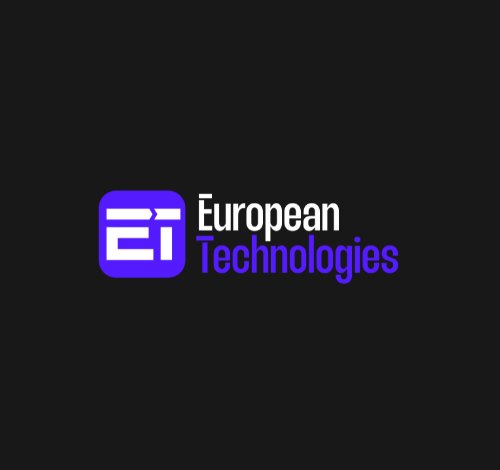Simplifying external staff management by extending SAP SuccessFactors on SAP Business Technology Platform

 Our core system for managing our external workforce was showing its age in an increasingly demanding modern workplace environment—we needed to simplify our external staff management.
Our core system for managing our external workforce was showing its age in an increasingly demanding modern workplace environment—we needed to simplify our external staff management.
Here at Microsoft, our large and diverse external, non-FTE workforce plays a vital role in our success. For us, external staff includes contractors, consultants, freelancers, and business guests who provide services, expertise, and support for various projects and products. As a company, we partner with more than 110,000 external staff in 119 countries and regions, representing almost 40% of our workforce.
Too many of our onboarding processes involved manual tasks that created inefficiency and introduced the potential for error.
— Himanshu Wadhwa, senior product manager, HR Foundational Services team, Microsoft Digital
Managing such a large and dynamic population of external staff is a big challenge for our Human Resources Operations team, which handles onboarding, data management, compliance, and reporting tasks for external staff.
Until recently, we in Microsoft Digital (MSD), the company’s IT organization, used our own internally built solution to help HR handle these tasks. However, our application was showing the symptoms of a legacy application in a modern workplace.
“Too many of our onboarding processes involved manual tasks that created inefficiency and introduced the potential for error,” says Himanshu Wadhwa, a senior product manager on the HR Foundational Services team in MSD. His team is responsible for investigating and building a new solution for managing external staff at Microsoft.
Wadhwa lists several ways the previous solution was struggling to meet the dynamic and changing needs of the business and the external staff, including:
- Real-time tracking and status visibility for external staff requests wasn’t possible, leading to thousands of extra queries and delays.
- It didn’t offer self-service functionality for external staff to update their personal information, resulting in heavy reliance on the operations team.
- It didn’t integrate well with other systems, such as procurement, finance, and third-party vendors, causing data inconsistency and duplication.
- It continually required development changes to support compliance with global and local regulations, exposing Microsoft to potential risks and penalties.
To address these challenges and achieve its vision of having a single HR source system for our entire workforce, the team decided to migrate external staff management to SAP SuccessFactors Employee Central, a cloud-based human experience management (HXM) solution that offers a comprehensive and flexible platform for employee and external staff lifecycle management.
[Discover upgrading Microsoft’s core Human Resources system with SAP SuccessFactors. Explore boosting employee engagement at Microsoft with Dynamics 365 and Power Platform. Unpack how we’re helping Microsoft employees understand their value with the Total Rewards Portal.]
Building on a solid HR operations core
We had already migrated the company’s core HR system to SuccessFactors, and for many of the same reasons, we were examining the external staff management solution. By rebuilding our HR core system at the company, our team provided a unified experience for all our employees.
In short, we wanted to extend the unified experience developed for our internal employees and managers to include the people and processes involved in managing our external staff.
Moving our contingent staff into the same solution as our full-time staff was a huge win for our HR team and it transformed how they can manage the employee experience for every person contributing to Microsoft’s success—internal or external.
— Kishore Rajaraman, principal product manager, HR Foundational Services team, Microsoft Digital
SAP SuccessFactors made perfect sense to our project teams. It’s already played a foundational role in our bid to transform our vast array of secondary HR systems, such as improving mobility, supporting new acquisitions, or transforming payroll. It also helped that the cloud-based SAP SuccessFactors HXM Suite runs on Microsoft Azure. SAP has a longstanding partnership with Microsoft as a preferred cloud provider.
“Moving our external staff into the same solution as our full-time staff was a huge win for our HR team, and it transformed how they can manage the employee experience for every person contributing to Microsoft’s success—internal or external,” says Kishore Rajaraman, a principal product manager for the HR Foundational Services team in the MSD team that implemented the SuccessFactors-based solution for external staff.
Implementation involved massive amounts of coordination from Rajaraman and his team. The implementation involved massive amounts of coordination from the core program team, which conducted a comprehensive study and analysis of user behavior, feedback, and pain points involving over 25 stakeholder groups. The team also performed multiple mock runs and data quality checks to ensure a successful data conversion from the previous solution to SAP SuccessFactors Employee Central, involving over 5 million rows of data for external staff.
We had many complex, unique requirements for our contingent staff. We wanted to create a solution that met those complexities with a consistent user experience and integrated with our other dependent systems.
— Kishore Rajaraman, principal product manager, HR Foundational Services team, Microsoft Digital
Creating integration with SAP BTP
The migration to SuccessFactors Employee Central was by no means simple.
“We had many complex, unique requirements for our external staff,” Rajaraman says. “We wanted to create a solution that met those complexities with a consistent user experience and integrated with our other dependent systems.”
The MSD Engineering Team used the SAP Business Technology Platform (BTP) to extend and customize SAP SuccessFactors Employee Central and SAP Fiori to create a consistent and intuitive user experience.
SAP BTP is an open and integrated platform that enables customers to build, extend, and integrate applications in the cloud. SAP Fiori is a design system that provides a user-friendly and responsive interface for SAP applications. Using BTP and Fiori enabled us to take the broad functionality of SAP SuccessFactors Employee Central and build in the customization and specialized functionality that a business of our complexity required. By using SAP BTP and SAP Fiori, our team was able to:
- Provide real-time integration with third-party systems, such as Adobe Sign, e-learning, and procurement, to ensure data accuracy and completeness and enable end-to-end automation.
- Automate process checks that were previously done manually. This eliminated the need for human follow-up and reduced the number of requests managed by External Operations team by approximately 65%.
- Enable self-service functionality for external staff to access and update their information, such as name, personal email, and evacuation assistance, improving their satisfaction and engagement.
- Provide dashboards and reports for managers, business admins, and operations teams to monitor and manage external staff requests, data changes, and compliance status, enhancing visibility and transparency.
- Support global workforce enablement and compliance with local labor laws and regulations in more than 100 countries and regions, ensuring alignment with our company policies and best practices.
We had capability requirements specific to Microsoft that no out-of-the-box solution could account for. SAP BTP allowed us to extend the platform to support those requirements while still staying within SAP’s development stack. It was a huge part of why we chose SAP SuccessFactors Employee Central for this solution.
— Manoj Lakshmanan, principal software engineer, Microsoft Digital
“Approximately 40% of our final solution was built by extending SuccessFactors using BTP,” says Manoj Lakshmanan, a principal software engineer on the MSD engineering team. His team helped build extensibility solutions that fulfilled specific use-cases for Microsoft.
“We had capability requirements specific to Microsoft that no out-of-the-box solution could account for,” Lakshmanan says. “SAP BTP allowed us to extend the platform to support those requirements while still staying within SAP’s development stack. It was a huge part of why we chose SAP SuccessFactors Employee Central for this solution.”
The team also used the SAP Analytics Cloud solution to enable data-driven decision-making and taxonomy management for our external workforce. Analytics Cloud includes BTP integration components in its reporting data, so the custom capabilities and integration built with BTP are monitored by Analytics Cloud right alongside the built-in capabilities. With SAP BTP and Analytics Cloud, our team was able to create an end-to-end solution that monitors the user experience, and increases the efficiency of our HR operations, managers, and external staff.
Supporting SAP BTP integration with Microsoft Azure
Microsoft’s partnership with SAP makes Microsoft Azure a perfect fit for SAP BTP integration processes. Critical components hosted in Microsoft Azure support custom integration and functionality in BTP. The scalability and reliability of Azure make it simple and efficient for our engineering teams to create and maintain these integration points, regardless of workload scale and demand.
In the Microsoft process for external staff onboarding, we have rules we must validate to confirm information about external staff that comes in from partner systems and data sources. This information could be anything from an individual’s background check to purchase order and supplier information. Azure-based APIs enable us to connect to those partner systems, get the incoming data validated, and then respond with the details.
— Ramkumar Perumal, principal software engineer, Microsoft Digital
Microsoft Azure Functions hosts a large number of API-to-API integration points in the solution architecture that allow us to retrieve and store data from some of our internal business systems that are external to Employee Central, including CRM, e-signing, identity management, employee training, finance, purchasing, and many more. We can also perform real-time validation and—if necessary—data transformation from these systems as it passes in and out of Employee Central.
“In the Microsoft process for external staff onboarding, we have rules we must validate to confirm information about external staff that comes in from partner systems and data sources,” says Ramkumar Perumal, a principal software engineer in MSD. “This information could be anything from an individual’s background check to purchase order and supplier information. Azure-based APIs enable us to connect to those partner systems, get the incoming data validated, and then respond with the details.”
The time saved by automating partner system integrations is a huge part of the cost savings realized from the new solution. Each integration point removes the need for manually tracking the progression of transactions, allowing them to focus on the areas of the onboarding process where their attention is most required. API-based integration with partner systems has automated more than 65% of the 70,000 onboarding transactions that go through External Operations each year.
It’s a significant win for the External Operations team, MSD Engineering, Microsoft HR, and the entire organization.
Realizing the benefits of Employee Central across the enterprise
Successful migration has provided immediate benefits for our external staff, managers, business admins, HR operations team, and other dedicated teams involved in the external staff management process. Employee Central provides extensive automation for external staff policies.
External staff require access to buildings and technology that can change often, depending on the contract or project they’re involved with. Employee Central provides oversight of external staff from beginning to end. Managers and stakeholders in the onboarding process can use Employee Central to determine the status of any external staff member, and external staff members have that same visibility into their assignment with Microsoft.
Integrating our internal and external staff management solutions is a critical step for Microsoft HR. Centralizing HR data administration opens opportunities to manage Microsoft’s workforce more wholistically and to leverage shared support models.
— Cari Paddock, architect, HR Service Data Next Administration
“Integrating our internal and external staff management solutions is a critical step for Microsoft HR,” says Cari Paddock, an architect in HR Service Data Next Administration. Her team ensured that the Employee Central solution met the diverse requirements for managing external staff. “Centralizing HR data administration opens opportunities to manage Microsoft’s workforce more wholistically and to leverage shared support models.”
Successful migration has provided immediate benefits for our external staff, managers, business admins, HR operations team, and other dedicated teams involved in the external staff management process.
“Improved efficiency and productivity are definitely at the top of the list,” Wadhwa says. “Reduced manual tasks, errors, and queries enable faster and more accurate responses for everyone involved in managing external staff.”
This integration enables External Operations support to enter the process at exactly the right time and to focus on the relevant transactions. Previously, Operations had to act on ever onboarding transaction.
Some of the other notable benefits include:
- Enhanced user experience and satisfaction by providing a modern, intuitive, consistent interface for accessing and updating external staff information and performing other HR-related tasks.
- Increased data quality and consistency by eliminating data duplication and inconsistency and ensuring data integrity and completeness across different systems.
- Strengthened compliance and risk management by adhering to global and local regulations addressing audit and reporting requirements.
- Enabled data-driven decision-making by providing a single source of truth for all workforce-related information and enabling advanced analytics and planning capabilities.
Our success is a testament to the power of collaboration and co-innovation between Microsoft and SAP, two industry leaders who share a vision of using technology to empower organizations and their employees. By working together, Microsoft and SAP have delivered a solution that highlights the best of both worlds: Microsoft’s engineering innovation and SAP’s HXM expertise.
— Himanshu Wadhwa, senior product manager, HR Foundational Services team, Microsoft Digital
By simplifying and streamlining the external staff management process with SAP SuccessFactors Employee Central and SAP BTP, we now have a single HR source system for both internal and external workforce while providing an excellent HR experience for our external staff and internal stakeholders.
Our solution also lays the foundation for future innovation and transformation, such as using artificial intelligence, machine learning, and predictive analytics to optimize and enhance the external staff management process.
“Our success is a testament to the power of collaboration and co-innovation between Microsoft and SAP, two industry leaders who share a vision of using technology to empower organizations and their employees,” Wadhwa says. “By working together, Microsoft and SAP have delivered a solution that highlights the best of both worlds: Microsoft’s engineering innovation and SAP’s HXM expertise.”
If you want to learn from our experience and improve your external staff management process with SAP SuccessFactors Employee Central and SAP BTP, consider the following:
- Evaluate your current external staff management process and identify the pain points and opportunities for improvement. Consider aspects such as data quality, user experience, compliance, scalability, and integration.
- Explore how SAP SuccessFactors Employee Central can help you streamline and standardize your external staff management process by providing a single source of truth, flexible workflows, and comprehensive functionality.
- Investigate how SAP BTP and SAP Fiori can help you extend and customize SAP SuccessFactors Employee Central to meet your specific needs and preferences by enabling rapid application development, seamless integration, and user-centric design.
- Examine how Microsoft Azure can support SAP BTP integration with data from external systems and data stores.
SAP SuccessFactors Integration with Microsoft 365
As an admin of your organization’s SAP SuccessFactors system, you can configure it to collaborate with Microsoft 365 applications. Here’s how:

Want more information? Email us and include a link to this story and we’ll get back to you.
Tags: human resources, SAP






